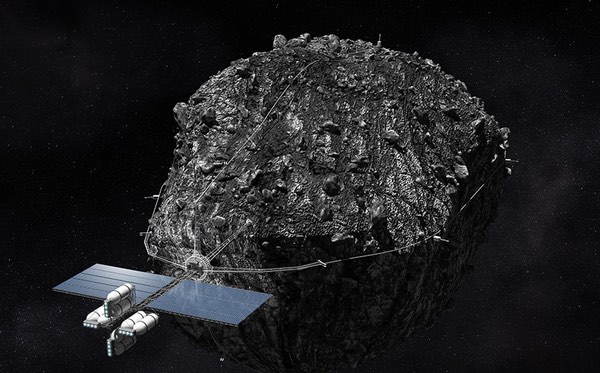Planetary defense to avert global economic crisisby Vid Beldavs
|
| At present, the capacity for planetary defense is almost non-existent. However, the technologies needed for asteroid and lunar mining, and the processing of space materials into useable products, could also be employed to help protect Earth. |
Planetary defense addresses asteroid impacts and other cosmic events that could threaten human survival on Earth. An asteroid impact wiped out the dinosaurs and a significant fraction of other life on Earth. Even relatively minor incidents events, such as the Tunguska event, could have destroyed a major city. Imagine the potential devastation if New York, London, or Beijing had been destroyed, rather than forests in remote Siberia? The 2012 Chelyabinsk event was undetected until it exploded over the city; it could have destroyed the city had impact had occurred at a slightly different angle. While calculated probabilities based on known objects indicate a low impact risk over the next few decades, the potential risk from unknown objects cannot be determined.
Planetary defense involves redirecting or destroying objects that could potentially impact Earth. At present, the capacity for planetary defense is almost non-existent. However, the technologies needed for asteroid and lunar mining, and the processing of space materials into useable products, could also be employed to help protect Earth. Space mining advocates anticipate trillion-dollar markets emerging for this industry in the coming decades. Additionally, the development of the enabling technologies and infrastructure required for credible planetary defense could also help drive down costs and risks of other space-related activities. Ambitious projects, such as NASA’s proposed Journey to Mars, could thereby become more affordable, and the vision of Elon Musk to colonize Mars could become an attainable goal.
The capacity to produce large amounts of energy in space is key to enable processing of lunar and asteroid materials, and is also critical for planetary defense. Space-based solar power (SBSP) has been proposed as a carbon-free source of power for meeting rising demand for electricity, particularly in remote areas lacking distribution infrastructure. The Sun shines continuously in space, with an intensity roughly nine times that on the surface of the Earth. SBSP involves large solar arrays in geosynchronous orbit beaming microwave or laser beams to the Earth’s surface that would be rectified for distribution through electrical grids worldwide. Power losses in transmission to the surface would be well within acceptable margins, and known environmental risks would be manageable.
Japan’s long range energy plan includes development of a two-gigawatt powersat by the early 2030s. Envision several gigawatts of generating capacity in orbit with the ability to beam power to any point on Earth on short notice. Technologies to provide power for disaster relief from space to any point on Earth are highly feasible. While upfront costs are initially projected to be high, piloting such technologies for applications in space to develop planetary defense capabilities could ultimately help drive down costs to the point where SBSP becomes competitive with ground based power. If gigawatts of power had been available for relief during the Fukushima disaster, the resulting benefits could have been worth tens of billions of dollars.
| A global effort to defend the Earth would serve to defuse international tensions and engage people from around the globe in an inspirational project toward building a more positive future for humankind. |
In the near term, a large-scale global space initiative to address planetary defense would provide a significant stimulus to help jump-start the global economy and create pathways for sustainable long-term development. The development of credible capacity for planetary defense will require substantial and sustained investment. A reasonable assumption is that required space infrastructure and enabling technologies could be developed within a decade by doubling present space agency budgets that, in the aggregate, total about $42 billion today. Aggregate European space investment could easily quadruple to match US levels.
Insofar as many more countries would get involved as commercial opportunities increase and costs of entry decline, a total global investment of $100 billion per annum in peaceful uses of outer space would be most reasonable. Considering the multiplier impact of NASA spending (up to a factor of severan), this $100 billion investment could have a stimulus effect of up to $700 billion annually on the global economy. Since this investment would build space infrastructure to enable asteroid mining, lunar industrial development, SBSP, space tourism, and many other space businesses, the multiplier effect of investment in space could in fact be much larger. Furthermore, the enhanced capacity for disaster relief could rapidly yield savings in the tens of billions of dollars, and if a major city could be saved from destruction by an asteroid, the value could be in the trillions!
Properly orchestrated, a global effort to develop planetary defense capabilities could engage scientists from the US, Russia, China, Europe, India, Japan, Korea, and other nations worldwide. The capacity for planetary defense will require the presence of human beings in space for extended periods of time, which in turn will necessitate the development of entirely new fields such as space agriculture, with potential spinoffs to improving food security on Earth.
Perhaps most importantly, a global effort to defend the Earth would serve to defuse international tensions and engage people from around the globe in an inspirational project toward building a more positive future for humankind.
